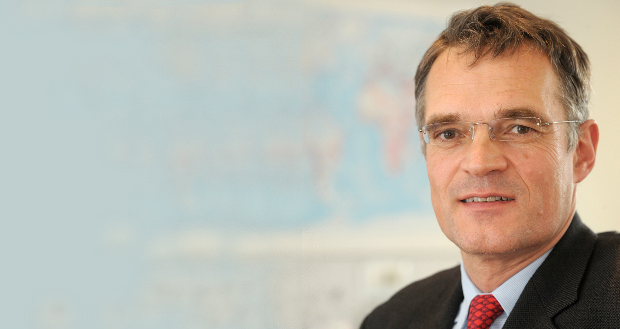
KBA’s CEO and president says the company needs to take dramatic action beyond downsizing and reorganising to overcome structural change in the global print market. Claus Bolza-Schünemann says the company will continue to shift its focus to growing markets such as packaging, and away from its traditional high end newspaper operations. He says, “Shrinking markets, such as newspaper, commercial and publications printing, oppose growth markets – for example packaging, digital printing and coding, as well as special markets, such as banknote printing, metal decorating or direct glass decoration. “We aim to secure our current strong position in these fields and expand on it further where possible. Capacity adjustments and new acquisitions cannot be ruled out as long as our liquidity is adequate, and this is the case at KBA.” The group has already acquired Italian flexible packaging outfit Flexotecnica and German glass direct decoration house Kammann, and has just announced a partnership with HP for inkjet solutions for the corrugated packaging printing segment.

Claus Bolza-Schünemann, CEO and president of KBA
It has even struck a deal with US budget single-width web press maker Tensor, to cover more bases by supplying to ‘heavily budget-oriented smaller newspaper houses,’ as well as high end players with its own heavy metal machines. The web offset manufacturing market has been hammered since onset the GFC, with the US, which used to be the world’s biggest buyer of commercial web presses, virtually stopping buying, and much of Europe following suit. KBA says that since 2011 an international slump in investment in web offset presses for newspapers and publications has intensified, following a minor interim high in 2010, and in 2014 the global volume of new web press orders will reach a new low of below €300m, which is shared by KBA, manroland, Goss, Mitsubishi and various smaller manufacturers such as Manugraph and Tensor. However KBA is determined to make changes to survive. It says it aims to ‘draw upon its technical know-how and experience in various market segments, even digital printing solutions, and sees itself as well positioned to meet the demands of the newspaper industry’. Christoph Müller, KBA executive vice president for the web press division, says, “The previously large web offset market segment has mutated into a niche market in terms of volume. This makes it difficult for suppliers to maintain customary R&D standards and offer free consultation, which is why we have initiated additional activities. “We are doing our best and have streamlined ourselves as a product house.” The company is dividing its sectors into autonomous business units, known as product houses, with responsibility for sales and earnings for the web presses, sheetfed presses, special presses (including bank note and digital printing), segments and production. It also plans to axe more than 1000 jobs at German and Austrian production sites. More than half will be cut at the web press facilities in Würzburg, Trennfeld and Frankenthal. A new site concept is being implemented for the group’s production, aiming to stop parallel activities and relocating its operations for a fresh start. Bolza-Schünemann says, “We have to sustainably strengthen our profitability and competitiveness in all areas. In order to do this we need more transparency and more strategic flexibility. “A holding company with a few central functions, a small management board and operative units assigned to it with own managing directors will support our goal.”
Comment below to have your say on this story.
If you have a news story or tip-off, get in touch at editorial@sprinter.com.au.
Sign up to the Sprinter newsletter


